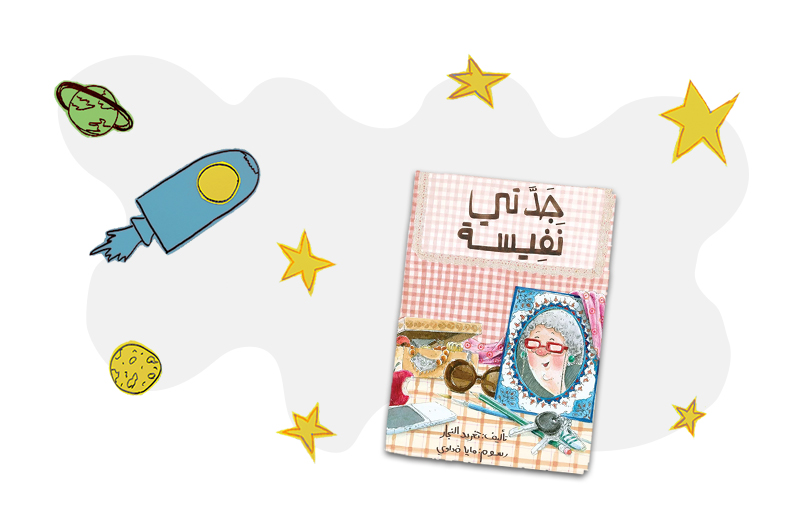Mothers’ Stories
15 Skills to teach your kids before they turn 6: Part 1

By: Helena Sayegh
In many cases, happiness is a state of mind that can be achieved by acquiring specific life skills. Some people are born predisposed to having these skills, others learn them from their parents and some have to learn them the hard way through trial and experience. Those who never reach happiness believe it is out there somewhere, and one day they will — hopefully — find it. They neglect to see that happiness can be found inside of them if they know how to look for it. Happiness is the gift of the present moment — the joy of now. It’s about concentrating on what’s right in front of you, rather than focusing on yesterday or tomorrow.
But how do we learn to live in the moment? Certain life skills help us be fully present at any given moment. Life skills are usually retained in the first ten years of our life. From there, the learning process builds on the original childhood foundation. As we age, we recognize our ability to live in the moment and find happiness within ourselves depending on the life skills we’ve learned and developed. When it comes to teaching your kids life skills, moms are particularly important. Dads are too, of course, but in general, moms spend more time with their children than anyone else. The life skills mom puts into practice influences and rubs off on her kids. And you can’t teach what you don’t know — meaning mothers need to be intentional about developing their life skills and applying them regularly. Passing on these skills to your children will equip them to live more fully in the present and find a greater sense of happiness and wholeness.
As you read this three-part article, keep in mind the following points:
-
Change takes time and any behaviour modification plan takes a minimum of a few months to show results.
-
Take it one step at a time and take breaks whenever you become discouraged, overwhelmed or demoralized.
-
Use different approaches when teaching these skills:
be a role model, shed light on behaviour, advise and explain, give alternative suggestions, refer to others who have the skills (without comparing), tell stories, role-play and repeat. -
Always start with the easiest skill for you to apply or implement, giving you stamina and encouragement to continue to see results in all areas.
No one skill is more important than another, so start wherever you are most comfortable with. -
All of these skills are related and intertwined.
Once you start with one, others start falling into place. It is a continuous, overlapping process. -
Each child learns differently;
be conscious of which ways your child acquires information (visual, hearing or sensory method).
Many methods exist besides the ones mentioned in this article. When practising and developing these 15 life skills, go ahead and research the various techniques while keeping simple aids in mind. And now, we shall dive into some of the key ingredients to happy living!
In part one, we introduce the first five life skills. Make sure to check out parts two and three of this series to read about all 15 life skills.
Remember — teaching your children to practice these skills offers them a life-long gift that never stops giving.
-
Decision-Making
Kids want to share control, they don’t want you to make all the decisions for them, hence the reason moms hear “no” coming from their small tots’ mouths so often! Instead of this becoming a struggle point between you and your child, learn how to support your little one by teaching them to make better decisions.
Start with this skill as early as you can — even at two-years-old. Offer acceptable options for food, clothes and toys. Start with two choices and then, a few months later, work up to three or four alternatives until the options become a list (with every option being something you consider acceptable). With regards to older children, allow them to make some of their own choices regarding activities, outings or other similar issues until they can determine their own life decisions (education, work, etc). The mom’s role is to supervise and advise, not to take over.
Example: "Oh my! It’s cold outside! Would you like to wear your red coat or your blue coat?"
Example: "I’m trying to decide what veggie to make with dinner. I have broccoli and carrots. Which sounds better to you today?"
Example: "I think you forgot your shoes! Would you like to wear sandals or tennis shoes?"
Note: All choices should be acceptable to you. Don’t give your kids options you’ll say no to. Guide them in good decision-making, they’ll be excited to share control.
-
Patience and Delayed Gratification
If your child asks you for something — a snack, a game or a play date with a friend — and your answer is “yes,” don’t be afraid to add “but you’ll need to wait five minutes until I’m finished with the dishes,” or however long you need to complete your current task. It’s also okay to say “no” to your kids when their request isn’t optimal for you or them. They need to hear “no” now and then.
Learning patience, delayed gratification (“Yes, but after a couple of hours,”) and how to move on from not getting their way is essential. It’s a life skill they’ll need to practice their entire lives. Try rewarding a child learning patience and doing their best not to nag or beg. It might take a little time for your child to get the hang of this if he or she is used to getting what they want whenever they want it. Start with modelling patience yourself. When you’re patient with others, you display a concrete example of how your little ones can be more tolerant with themselves, others, and life in general.
Example: "Yes, I would love to give you a piece of chocolate. But you need to be patient until after lunch. Thanks for understanding!"
Example: "Yup, I think you’d have a lot of fun with that toy car we saw at the store today. If you help me with the dishes three days in a row, I could buy it for you."
Example: "No, you can’t play outside right now, it’s raining. But we can play a board game once you are done eating."
Example: "I am so proud of how hard you’re working to be patient. It’s going to get easier and easier the more you practice!"
-
Problem-Solving
When our children come to us with a problem, it’s natural for us to jump right in and try to offer them a solution. We want to fix, fix, fix! But we often rob our kids of learning how to problem-solve on their own. Life is long and complicated, and the earlier your little one learns to think through their dilemmas, the better it is for all.
Start by listening to what your child is saying, and fight the urge to interrupt and make suggestions. The next step is to ask questions, and not “yes” or “no” questions. Help your child open up, think critically and learn to interpret and evaluate problems. Maybe it’s a misunderstanding with a friend or sibling. Ask about the friend’s behaviour or comments, and then ask about your child’s behaviour in the situation. As your child relays the issue and thinks about it from different angles, encourage him or her to give some possible solutions to the problem. You can coach them through the process. And if they can’t think of anything after taking some time to think, offer to help. Once your child invites you into the problem-solving process, suggest a few options. This way, your child still takes initiative and has to choose between how he or she is going to proceed in the situation. Let them know you’re always there to talk and help. Thank them for sharing the problem with you. This approach teaches your kids how to process information, understand their hearts and behaviour, analyze others’ behaviour and search for creative options when problem-solving.
Example: "You seem pretty upset. Do you wanna talk about it?" "How do you feel? What do you think he meant by that?" "If you were in his shoes, what would you have done?" "How do you think he felt about what you said/did to him?" "Was there something you could have done/said differently?" "Can you give me some ideas about what you should do now? How can I help you?"
-
Commitment and Discipline
A disciplined child grows into a disciplined and committed adult. Moms, teach your kids how to make informed decisions and stick to commitments. So, how do you handle their constant desire to try new things — passionately starting a new activity only to quickly abandon it and move on to the next fun thing? Between the ages of four and ten, expose your child to as many activities as possible. Don’t try more than two at a time. Dabbling in various sports or activities will allow you and your child to see what they enjoy or are good at.
Remember, sometimes your child will want to stick with something because they see that they're naturally gifted at it; other times, they'll want to proceed because they're just having a lot of fun. When your child is tired or frustrated over the activity, offer encouragement. Quitting is acceptable when there is a good reason, but it shouldn’t be due to laziness or irresponsibility. Have an open discussion with your child about how they are feeling, and help them come up with a plan. And remember your kids are watching the way you commit yourself to various tasks and activities. A disciplined mama offers the best opportunity for raising a committed child. Be a role model.
Example: "I know you are tired now. But remember how many times you asked me to sign you up for football? I’m pretty sure you can do this. I’ll stay with you and cheer you on. Let’s talk about it again after the game and see if you feel differently."
Example: "I know you don’t want to practice the piano, but that’s not an option today. Would it make it more fun if I practised your songs after you try them out?"
Example: "I know you’re nervous about trying dance class for the first time. What if I came and did the class with you? I’ve always wanted to learn to dance."
Another form of discipline is when children are taught to take responsibility for their improper behaviour and accept the repercussions. Spend time with your child; explain the poor choice made, share how to admit (with courage) making this choice and remind them they have another choice about how they’ll handle the consequences (with grace and strength, or tantrums and complaining). Don’t use guilt statements or emotional blackmail. Make an effort to turn every bad choice into a learning opportunity. Your children will learn responsibility from this approach.
Example: "Man, it looks like that wasn’t a very good choice. It’s a bummer, but you’re going to have to do without your toy cars until tomorrow. Can you explain to me how you could have handled that situation better? What would have been a better choice to make? "
5.Communication
There are times when we all — moms, dads and kids alike — need to “vent” and release bottled up thoughts or emotions. We must allow our kids to express their feelings, no matter how negative those emotions are. Give them a “safe space” — with no fear of punishment or shame — to openly share what’s on their hearts and minds. Discussions (and even disagreements) help children improve their communication, listening and negotiation skills. Through discussion, kids learn to understand themselves and others better, develop the ability to interpret non-verbal cues and practice expressing themselves confidently. Guide your kids as they learn to express themselves and share their hearts. Give them a safe space to share, and help them learn to put their feelings into words that lead to answers, problem-solving and reconciliation.
Example: "Hey bud, it’s ok to express your anger out loud, but it is not ok to be rude and use inappropriate language. Can you reword what you just said?"
Example: "Thanks for sharing. This is what I understood... Did I get your point of view?"
Example: "I feel like you’re not listening to me, and I would like you to stop interrupting me. Let’s both take an hour to calm down and sort out our thoughts, and then we’ll come back and try again."
Example: "I hear what you’re saying, and I’m thankful you trust me enough to share what’s going on with you. This time, I don’t agree with you. Respect my thoughts and decision, and feel free to continue talking to me about how this makes you feel."
I hope you enjoyed part one of our three-part life skills series. Feel free to print out these first five skills out, talk about them with your partner and start implementing them with your children. As your family adopts them into daily life, you’ll experience greater happiness individually and as a whole. Make sure to continue reading part two and three. Not a single life skill is more important than another, so keep reading to educate yourself and your kids on how to find a greater sense of happiness from within.
*This is an edited article from the original one from http://www.helenasayegh.com/













